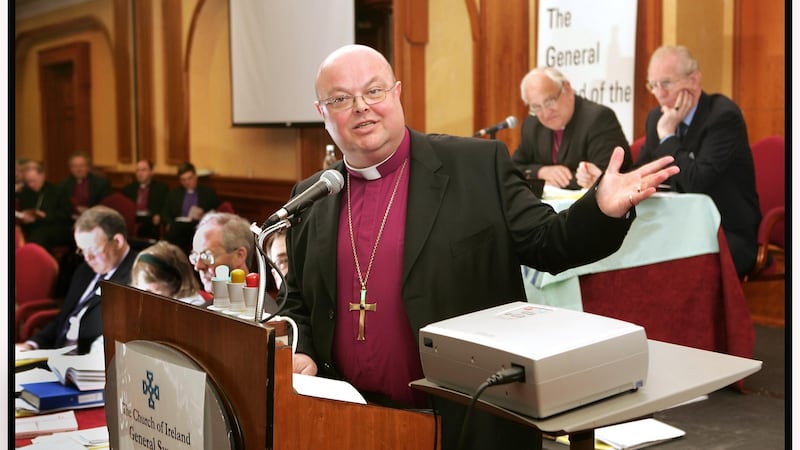The Church of Ireland is to mark the centenary of the highly controversial shooting dead of 13 Protestant men in West Cork after the Truce in April 1922 when Bishop of Cork, Cloyne and Ross, Dr Paul Colton will this week visit the various parishes where the killings happened.
The killings, which became known as the Bandon Valley Massacre, when 13 Protestant men and boys were shot by unidentified armed men in late April 1922, have been the subject of huge controversy since Canadian historian, Peter Hart asserted the killings were sectarian.
In his book, The IRA and Its Enemies -Violence and Community in Cork 1916-1923, published in 1998, Dr Hart concluded that the primary motivation behind the killings of the 13 men around Dunmanway and the Bandon Valle was sectarian.
In a chapter entitled ‘Taking it out on the Protestants’, Dr Hart stated: “Behind the shootings lay a jumble of individual histories and possible motives. In the end however, the fact of the victim’s religion is inescapable. These men were shot because they were Protestant.
“The sectarian antagonism which drove the massacre was interwoven with political hysteria and local vendettas, but it was sectarian nonetheless,” wrote Dr Hart who was unable to respond to much of the subsequent criticism of his methodology as he died in 2010.
Thesis dispute
Irish historian Dr Brian Murphy disputed Dr Hart's thesis, arguing that Dr Hart relied on a selective interpretation of a British army document, "The Record of The Rebellion in Ireland 1920-21" which reported on loyalists providing intelligence to the British.
Dr Murphy said the British document stated generally loyalists had little information to give on IRA activities but Dr Hart had ignored an important line in the document which said the exception was “in the Bandon area, where there were many Protestant farmers who gave information”.
Dr Hart's thesis was further challenged at a debate attended by over 500 people in Cork in 2012 when historian Dr John M Regan said that "Hart's narration of the massacre is a compelling piece of writing - (however) Hart's treatment concentrates more on the atrocity than its context".
Emeritus Professor of History at UCC, John A Murphy, who died earlier this year, told the meeting that it was impossible to know the motivation of those behind the killings when their identities were not known but it was impossible to say that they were not at least partly sectarian.
The Long Silence
Journalist, polemicist and former Sunday Independent columnist Eoghan Harris also imputed a sectarian motive to the killings when discussing his film about the treatment of Protestants in West Cork, 'An Tost Fada', (The Long Silence) based on the experience of Church of Ireland clergyman Canon George Salter and his family.
Mr Harris told the West Cork History Festival in 2017 that those who challenged the central thesis of the documentary about Canon Salter's experience were in denial that there was a sectarian element to the War of Independence in West Cork.
Pastoral visits

Bishop Colton has addressed the controversy when writing in this month's Cork, Cloyne and Ross Diocesan Magazine when he announced that he intends to mark the centenaries by making pastoral visits next week to the parishes most closely affected by the killings.
He acknowledged that the events of the Bandon Valley have “been written about extensively and debated with different narratives, emotions and responses elicited. Why it happened and what the motives of people were, are elusive questions - what can we know with certainty at this remove?”
But Bishop Colton said that at other level, the facts were straightforward - Protestant men Thomas and Samuel Hornibrook, Herbert Woods, James Buttimer, David Gray, Francis Fitzmaurice, Robert Howe, John Chinnery, Robert Nagle, Alexander Gerald McKinley, John Buttimer, James Greenfield and John Bradfield were all shot as was IRA Commandant, Michael O'Neill from Timoleague.
“Two of those were 16 years of age and the oldest was 82. Twelve were members of the Church of Ireland in this diocese. Attempts were made on others’ lives and they had to escape, many never to return. We know that in the years that followed, many people from Cork, Cloyne and Ross felt insecure in this part of the world and left”.
Bishop Colton said he was not in a position to adjudicate on the historiography of the period but as the lead pastor in the diocese and, having consulted with the local clergy who had spoken to the descendants of those who died, he believed his primary duty in prayer and liturgy was to ensure those killed and the events were remembered appropriately as part of the Decade of Centenaries.
And he pointed out that since 2014, the Diocese of Cork, Cloyne and Ros had been commemorating centenaries for the period 1914 to 2024 in a programme called the Cork, Cloyne and Ross Centenaries Commemoration and Reconciliation Project.
“One element of this was the creation of a memorial space for prayer and reflection in St Finbarre’s Cathedral in Cork which from 2014 to 2018 commemorated Cork people who were killed or wounded in the First World War,” he said.
"Since 2019, that space has one of prayer and commemoration of those who died in the War of Independence and the Civil War and in 2021, led by the Lord Mayor of Cork, Cllr Colm Kelleher and Mayor of Cork County, Cllr Gillian Coughlan, a service was held to remember all those who died in Ireland during the War of Independence."









